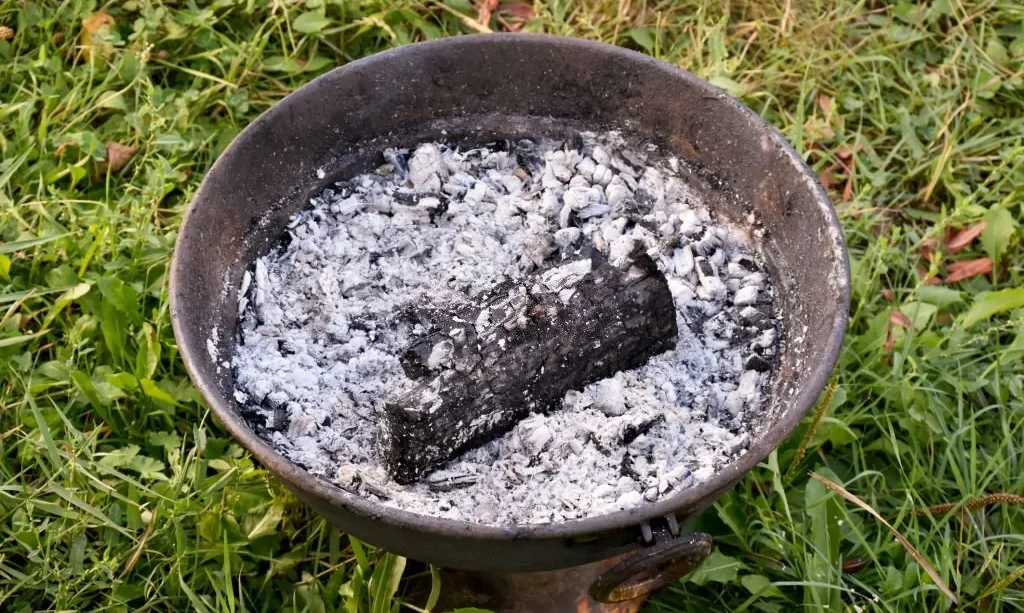In the realm of gardening and landscaping, the practice of using ashes has been handed down through generations. Whether sourced from fireplaces, wood-burning stoves, or outdoor bonfires, ashes have long been considered a valuable resource for improving soil health and plant growth. However, when it comes to nurturing your beloved grassy expanse, the question arises: Are ashes truly beneficial for your lawn? In this exploration, we delve into the world of ashes and their potential role in grass care. We’ll scrutinize the types of ashes available and their composition, unveiling the secrets behind these seemingly humble but potentially powerful additions to your lawn care arsenal.
- Highest Grade Premium Hardwood Ash double sifted like coarse flour
- Chicken Dust Bath – Perfect Texture
- Natural Fertilizer, Compost Boost, Organic Soil Sweetener, Ceramic Ash Glaze, Aquaponics Ph adjustment, Melt Ice, and countless other uses
- Raise pH and increase Ca, Mg, P, or Mo in soil
- Clotting agent for minor wounds, clean glass, litter box deoderizer
Types of Ashes and Their Composition
Before we dive into the merits of using ashes for your grass, let’s shed light on the diversity of ashes and what makes up their composition:
- Wood Ashes: Among the most commonly used, wood ashes are derived from the burning of hardwood or softwood in fireplaces, stoves, or fire pits. They are prized for their rich nutrient content, with notable concentrations of potassium (potash) and calcium carbonate. Wood ashes are a favored choice for grass and garden applications due to their valuable nutrient profile.
- Other Sources: Ashes can also originate from other materials, including the remnants of burned leaves, yard waste, or even agricultural crop residues. These sources may have different compositions, with varying levels of nutrients and minerals.
- Nutrient-Rich Content: The composition of ashes is where their potential as a lawn fertilizer shines. They contain essential plant nutrients, with potassium being a standout. Potassium promotes root growth, disease resistance, and overall grass vigor. Additionally, wood ashes contain calcium carbonate, which can help reduce soil acidity.
While the nutrient-rich content of ashes is a promising attribute for grass care, it’s essential to explore their benefits and potential risks comprehensively.
The Benefits of Using Ashes for Grass
Using ashes as a lawn fertilizer can offer several advantages for your grassy expanse:
- Nutrient Enrichment: One of the primary benefits lies in the nutrient-rich content of ashes. Potassium, a key component found in wood ashes, plays a pivotal role in promoting robust grass growth. It encourages strong root development, enhancing your lawn’s ability to withstand environmental stressors.
- pH Adjustment: Wood ashes also contain calcium carbonate, which acts as a natural pH adjuster. This can be especially beneficial if your soil tends to be acidic. A proper pH balance in the soil is essential for optimal nutrient uptake by grass roots, making your lawn healthier and more resilient.
- Cost-Efficiency: Ashes, often readily available from household activities like burning wood, can be a cost-effective alternative to commercial fertilizers. Harnessing this resource can save you money while contributing to your lawn’s vitality.
- Reduced Waste: By repurposing ashes from fireplaces or fire pits, you contribute to reducing waste and make use of a byproduct that might otherwise be discarded.
Proper Application of Ashes
While the benefits of using ashes for your grass are clear, it’s essential to apply them correctly to ensure positive results:
- Even Distribution: Begin by ensuring an even distribution of ashes across your lawn. Spreading them too thickly in one area can lead to localized over-fertilization, which may damage the grass.
- Incorporation: To prevent direct contact between grass blades and ashes, incorporate the ashes into the soil. This can be done through gentle raking or watering the lawn after application. Avoid leaving ashes on the grass surface, especially during dry periods, as they can absorb moisture and potentially harm the grass.
- Moderation: Exercise caution with the quantity of ashes applied. It’s best to start with a modest amount and assess your lawn’s response before considering additional applications. Remember that too much of a good thing can lead to problems, including excessive soil alkalinity.
- Soil Testing: Before applying ashes, consider conducting a soil test. This helps you determine your lawn’s current pH level and nutrient content. Armed with this knowledge, you can make more informed decisions about the amount of ash needed and avoid over-alkalizing the soil.
By adhering to these proper application practices, you can harness the benefits of ashes without inadvertently harming your lawn.
Potential Risks and Precautions
While ashes can be a valuable addition to your lawn care routine, there are potential risks and precautions to be aware of:
- Over-Alkalinity: Excessive use of ashes can lead to soil over-alkalinity, especially in areas with naturally alkaline soils. This can disrupt nutrient uptake and harm grass growth. Always apply ashes in moderation and avoid overdoing it.
- Contaminants: Depending on the source of the ashes, there is a possibility of contaminants, such as heavy metals or chemical residues, being present. It’s essential to know the source of your ashes and exercise caution, especially if they come from materials like treated wood or industrial sources.
- pH Monitoring: Regularly monitor the pH of your soil when using ashes. Soil pH can change over time, so ongoing assessment is crucial. If you notice a significant increase in alkalinity, adjust your ash application accordingly or consider alternative fertilization methods.
Alternatives to Ashes for Lawn Fertilization
If you have concerns about using ashes or prefer alternative lawn fertilization methods, several options are available:
- Commercial Fertilizers: Commercial lawn fertilizers are specifically formulated to provide essential nutrients to grass. They come in various formulations, including slow-release and organic options.
- Organic Amendments: Organic materials like compost, well-rotted manure, or grass clippings can enrich your lawn’s soil with nutrients naturally. These materials also improve soil structure and moisture retention.
- Soil Testing: Conduct regular soil tests to determine your lawn’s nutrient and pH needs. Soil tests provide valuable insights into which fertilizers or amendments are necessary for healthy grass growth.
Conclusion
In conclusion, the use of ashes as a lawn fertilizer can offer benefits such as nutrient enrichment and pH adjustment. However, it’s crucial to proceed with caution, following proper application techniques and monitoring soil conditions to avoid potential risks like over-alkalinity or contaminants.
For those who prefer alternative fertilization methods or have reservations about using ashes, there are various commercial fertilizers and organic amendments available that can nurture your lawn effectively.
Ultimately, the decision to use ashes or alternative fertilization methods depends on your lawn’s specific needs, soil conditions, and your comfort level with this traditional practice. By taking into account the benefits, precautions, and alternatives, you can make an informed choice that leads to a healthy and vibrant grassy landscape.




